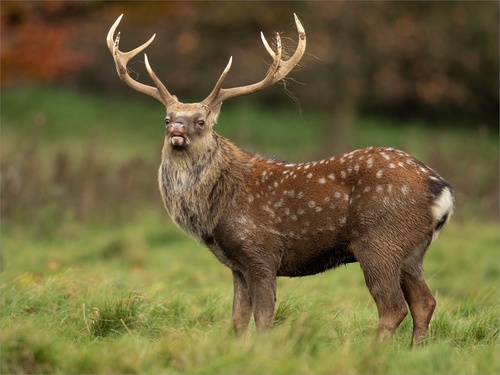
Sika Deer
The Sika deer, with its distinctive spotted coat, thrives in East Asian forests and grasslands. Known for its unique calls and adaptability, it plays a crucial role in its ecosystem, often seen in loosely formed herds. Its presence enriches the biodiversity of its habitat.
15-18 years
Lifespan
31.75 - 158.76 kg
Weight
Length: 89 - 178 cm; Height: 51 - 114 cm
Size
Brown, Grey, White, Chestnut
Color
16-18 months
Age of Sexual Maturity
10 months
Age of Weaning
Low
Aggression
30 mph
Top Speed
Least Concern
Conservation Status
Increasing
Population Trend
Characteristics
Cervus nippon, commonly known as the Sika deer, is native to East Asia. It thrives in temperate forests and grasslands. Notable for its spotted coat, which aids in camouflage, the Sika deer exhibits unique vocalizations and is highly adaptable, often forming loose herds.
Distribution Range of the Sika Deer
Cervus nippon, commonly known as the Sika Deer, is native to East Asia. Its geographical distribution primarily includes the countries of Japan, China (particularly in the northeastern regions), Korea, and Taiwan. The species was historically widespread across these regions, with significant populations found in the forested and mountainous areas.
Sika Deer's Habitat
Environmental Conditions
The Sika Deer typically inhabits temperate and subtropical forest environments. They are adaptable to a range of forest types, including deciduous, mixed, and evergreen forests. The climate in their native regions varies, with colder temperatures in northern areas like those in China and Korea, and more temperate conditions in Japan and Taiwan.
Ecological Niche
Sika Deer are browsers, primarily feeding on leaves, twigs, and herbs, which aligns with their forest habitat. They play a role in maintaining the ecological balance by influencing vegetation patterns and providing prey for predators. In regions like Japan, they are also known to inhabit open grasslands and have adapted to areas with human presence, such as parks and agricultural land. This adaptability to diverse habitats is a significant feature of their ecological niche.
Copyright @ Nature Style Limited. All Rights Reserved.
 English
English